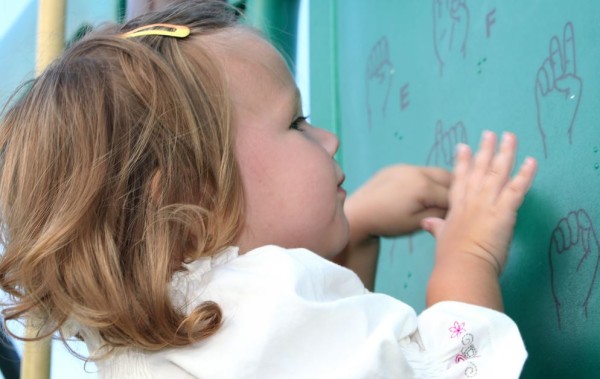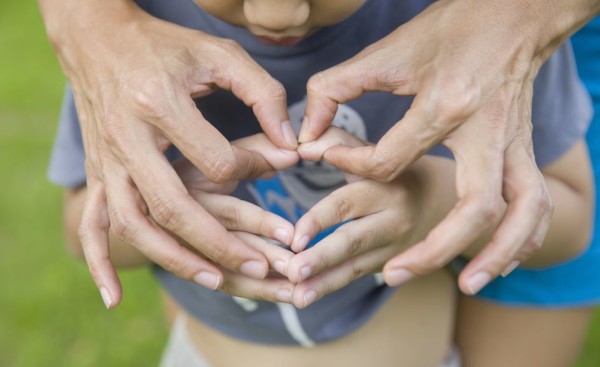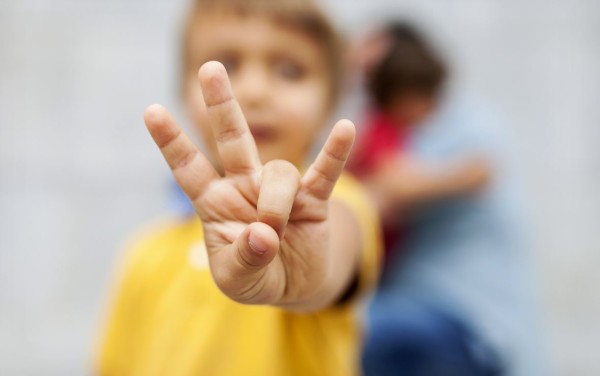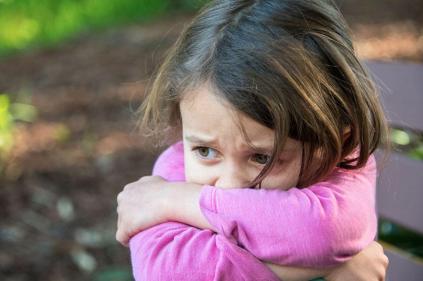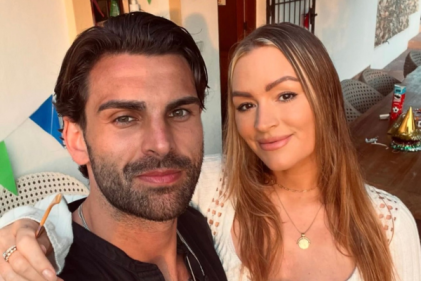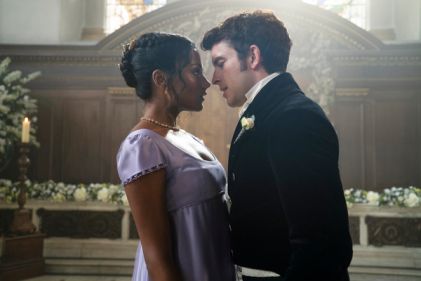When people think of sign language, they think it is something which deaf people just do. But sign language is much more than that. Each country has its own individual sign language which incorporates it's own history and culture. Just as some accents are beautiful tones to the ear signing hands are a linguistic dance to the eye.
The light, soft, fluid movement of the fingers and hands can be memorising to a person who is discovering this beautiful language for the first time. Sign language is where I discovered a new love. A love I never envisaged the hearing me would ever be attracted to. However, when your child's small hands signs "I love you" for the first time it's hard not to become smitten!
I have wanted to write about the importance of having early access to sign language for children like Eoghan for so long. I was finally inspired by the Oscar Winning short film, The Silent Child. A film about a six-year-old deaf girl who struggles to communicate because she did not have early access to a language. This film resonates with me as I am a mother of a deaf child. Our family made the decision at a very early stage to make sign language a part of our life.
I remember getting Eoghan's diagnosis and the first question I asked the consultant was "so what do we do, do we go and learn sign language?" The consultant looked at me as if I was in a time warp from the 1950s. He said "oh no, not nowadays - things have moved on. You don't need to do that, sign language is a thing of the past".
At the time I knew very little about the deaf community. With that quick fired statement the one thing I thought I knew was pulled from under me. We never sat comfortably with that statement as it seemed to simplify the reality of our new found situation. Now three years on we understand why and we are thankfully that his advice fell on deaf ears that day.
If we had listened to that consultant on that particular day, we would have always believed that sign language was not something we needed to learn. However we were on a mission and eager to learn. I could not understand how as a mother of a deaf child I would never learn sign language. I truly felt that it was my moral obligation to learn what I thought was my son's natural language.
Yes our child would get a cochlear implant and YouTube told us he would speak fluently. But there was a huge part of us that said "what if he didn't?"
Along with our morale conscience and realistic optimism we signed ourselves up for sign classes within weeks of his diagnosis. We were not surgeons or therapists. But we were parents who wanted to communicate and adopt a sense of our son's world. Therefore learning a language that would allow us to do this was vital. The quest to learn sign language was as much for our hearing selves as for our deaf son. Sign language was of mutual benefit for our new hearing/deaf family.
As is it happened, a couple of months after diagnosis, we were told that it was likely a cochlear implant would not be a success for Eoghan. Sitting in front of another consultant on another day we were this time instructed to start learning sign language. However were already on that train and had fallen in love with it. We needed no convincing. Sign language for us was never a second best option, not a "just in case option."
It was something we wanted to learn and introduce into our family's life from the start. If we had listened to the first consultant we would have wasted so much precious time introducing Eoghan to this visual language. However it was good to know that we had followed our gut feelings and started sign language before it was instructed.
Two years after Eoghan was born, I had an amazing signing experience. I was on a train - a very rare occurrence in itself! - and I was enjoying my child free-time with friends but this little child, who was no more than five, had caught my attention. Why was I drawn to this particular child? Because she was a silent child. We were on the train for two hours and she played so gracefully but in silence. The only sound which came from her seat was from her baby Annabelle doll. I was amazed because my five-year-old would not be content enough to be that silent for that length of time. Something inside of me wanted to approach this child and her mother.
I was convinced that I had deaf radar and just knew that this child was deaf. I wanted to introduce myself and tell the mother of this little girl that I too had a deaf child. I made an unnecessary trip to the toilet so I could pass the seats which were two rows ahead of me.
On my return I signed, "hello what's your doll's name?"
With the sweetest voice the little girl replied, "she's an Annabelle doll". My facial expression must have spoken a thousand words as she signed to her mum and spoke to me "I'm not deaf my Mummy is"
Then suddenly I realised that the little girl was playing in silence as she was communicating with her travel companion through sign. But she knew even though I introduced myself in sign that I was hearing as she probably heard me talking to my friends. Then the conversation started between the three of us. I signed with the mum and when her mum forgot to tell me something the little girl would speak to me and her mum would ask her daughter in sign "what did she say!" It was an amazing moment of bilingualism.
This five-year-old girl was signing as if she was 20-years-old and her speech was of equal quality.
I was filled with pride at the beauty of her talking hands. Her mum was so happy that I had stopped to converse with them. It meant so much to her because her daughter was so happy to help bridge the communication gap between the hearing and deaf world.
Some schools of thought would discourage introducing sign language because it prohibits your child's chances of talking. This five-year-old child of a deaf parent had been exposed to sign all her life. More than likely it was her first language.
However, she spoke so eloquently beyond her age. She was bilingual filling in the gaps for her mum through sign, filling in the gaps for me with spoken English while understanding my limited unpolished signing. Therefore the question has to be asked "why wouldn't you introduce sign to your silent child?"
When any child is so small you wonder how much do they understand, and I recently found my answer when my mum passed away. I dug deep to find the words to tell my hearing 5- and 7-year old boys about their granny's passing.
But how was I to explain this to my then deaf 2-year-old? I had not the range of signs for this deep meaningful conversation that any two-year-old would struggle to comprehended. But I was wrong, he understood everything.
As the months past I realised how much he would sign to me about his granny. An example of this was one day we were at the hospital for Eoghan's appointment. As soon as the car pulled up to the entrance, Eoghan hands started to dance to the rhythm of his excitement. He started to sign "granny's house. Eoghan happy. Granny's house".
We had not been to the hospital for 15 weeks! When we got into the hospital he ran to the stairs well and signed "Eoghan see Granny. Granny bed."
With a heavy heart I moved Eoghan away and went to queue for his appointment. In my arms I held him. I was so proud that he had had that memory and he had away of telling me. Imagine if he could never sign, I would never know that he still remembered his granny.
Then he tapped me to get my attention and signed "Granny sick. Granny gone. Granny bed. Eoghan sad."
Eoghan understood that Granny was gone. As much as it pained me to know he was sad it was a relief that he was able to express his emotions at such a young age.
Already sign language has allowed us to see how much Eoghan knows not how much we assume he knows. Eoghan may never find a fluent vocal voice. But at three-years-old he makes sounds which resembles words, something we thought would never be possible.
Any words he attempts are words he knows through sign. Ultimately he is a non-verbal child. Yet we communicate every day. He tells me what he wants to eat, where we are going and gets what he wants because his hands are busy talking.
I have no idea what Eoghan's vocal voice truly sounds like but there is no face that I can read better then his. Communication with a deaf person is all about eye contact and body language. Eoghan might not always hear the sounds of his brother's cry but as soon as their body language displays upset he is the first to go and comfort them.
He understands everything even though he is blocked from the sounds of our house. It does not stop him from being involved and included. Why? Because he has a language, a language we are learning together as a family. Yet the greatest sadness which I have is not that he is deaf but that Eoghan may struggle to be understood outside of our family walls.
For Eoghan and other children like him there is nothing they can not do but hear. They can learn anything but they need to learn it in a different way. They need access to what the world is waiting to teach them but this is only possible if it is in a language they understand.
Once they have a language they too can show society what they know. As The Silent Child depicts; without access to their language in all areas of their lives, they will never be completely on the inclusion train. They will remain in their own silence missing numerous opportunities of reaching their full potential.


